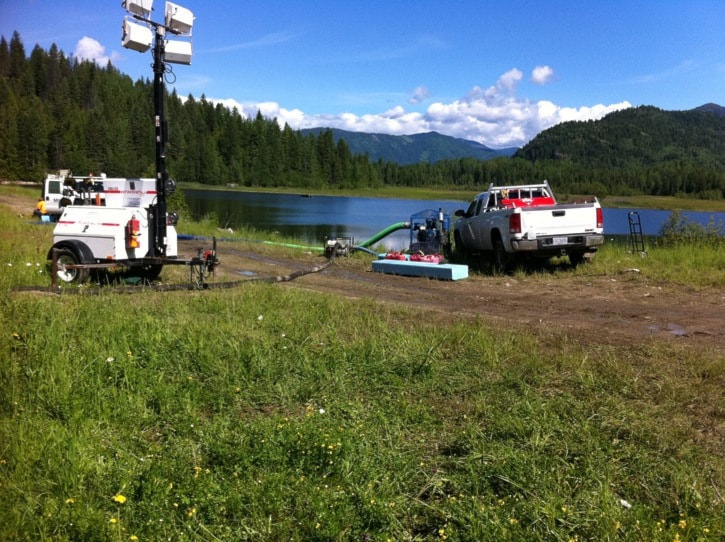As repairs and analysis of the HB mine site’s tailings pond begins, Nelson city councillor Donna Macdonald is congratulating regional district staff and consultants on identifying and dealing with the problem quickly.
Macdonald was part of a group of Regional District of Central Kootenay representatives who visited the pond on Tuesday.
“It would have been a pretty serious disaster had things gotten worse,” she said on Wednesday following the visit. “We’re lucky the inspection caught it when it did and engineers and crews moved in really rapidly, and the provincial emergency program was there. A lot of attention was focused on it very quickly to prevent what could have been a very unpleasant event if the material had slid further down slope and eventually across the highway and into the river.”
The regional district discovered a sinkhole this week, which was determined to be the cause the slough, and seepage, which occurred last week.
Macdonald said she learned a lot out the nearly 100-year-old dam, which was compromised by the sinkhole.
“What they surmise to be the cause of the slide or slough from the dam, which they found on the upper side of the dam after they lowered the water, they discovered this vertical flat pipe and over time water had been seeping in along that pipe. Gradually the seepage built this sinkhole, and when the very heavy rain happened, that was the final straw. Water just surged through that sinkhole and into the dam.”
The regional district is currently working with engineers and geo-technicians to stabilize the dam.
“The first priority is to stabilize it and that is well underway. The water level is way down, they are moving material in to stabilize the dam and make sure it doesn’t create any further problems down stream,” said Macdonald.
The Regional District of Central Kootenay purchased the six-hectare tailings area in 1998 as part of their central landfill area.
“It’s tailings from the HB mine. It is estimated that there are about 15 feet of tailings underwater,” said Macdonald. “If there were only tailings in that pond it would be fairly simple to say let’s just decommission and isolate those tailings and be done with it but, because of the location of the pond, it gathers drainage from the surrounding slope and it also collects a bit of drainage from the landfill itself so it’s not really possible to just shut it down. It needs to be managed.”
There is some confusion around whether it is the responsibility of the regional district or of Teck to manage the ponds, and Macdonald said there would likely be lots of questions and answers going forward.
Mine tailings – like the ones in the pond south of Salmo – are usually produced from the mine in a slurry form, which is a mixture of fine mineral particles and water.
The term tailing also specifically refers to fine waste suspended in water.
A state of emergency was issued for rural Salmo following the slough and seepage.
Emergency remediation work is ongoing to build an additional supporting berm on the dam face to ensure stability and retention of tailings.
Crews are using excavators to place rock and fill materials to remediate the failed area and buttress the slope.
But as crews work questions are mounting on what the cost will be for the repairs and remediation of the site.
Macdonald was unable to comment on where the money might come from but said she as hopeful that there would be money coming from the provincial emergency program.
The Star has contacted both Teck and the Regional District of Central Kootenay for comment, but has not yet received a response.
